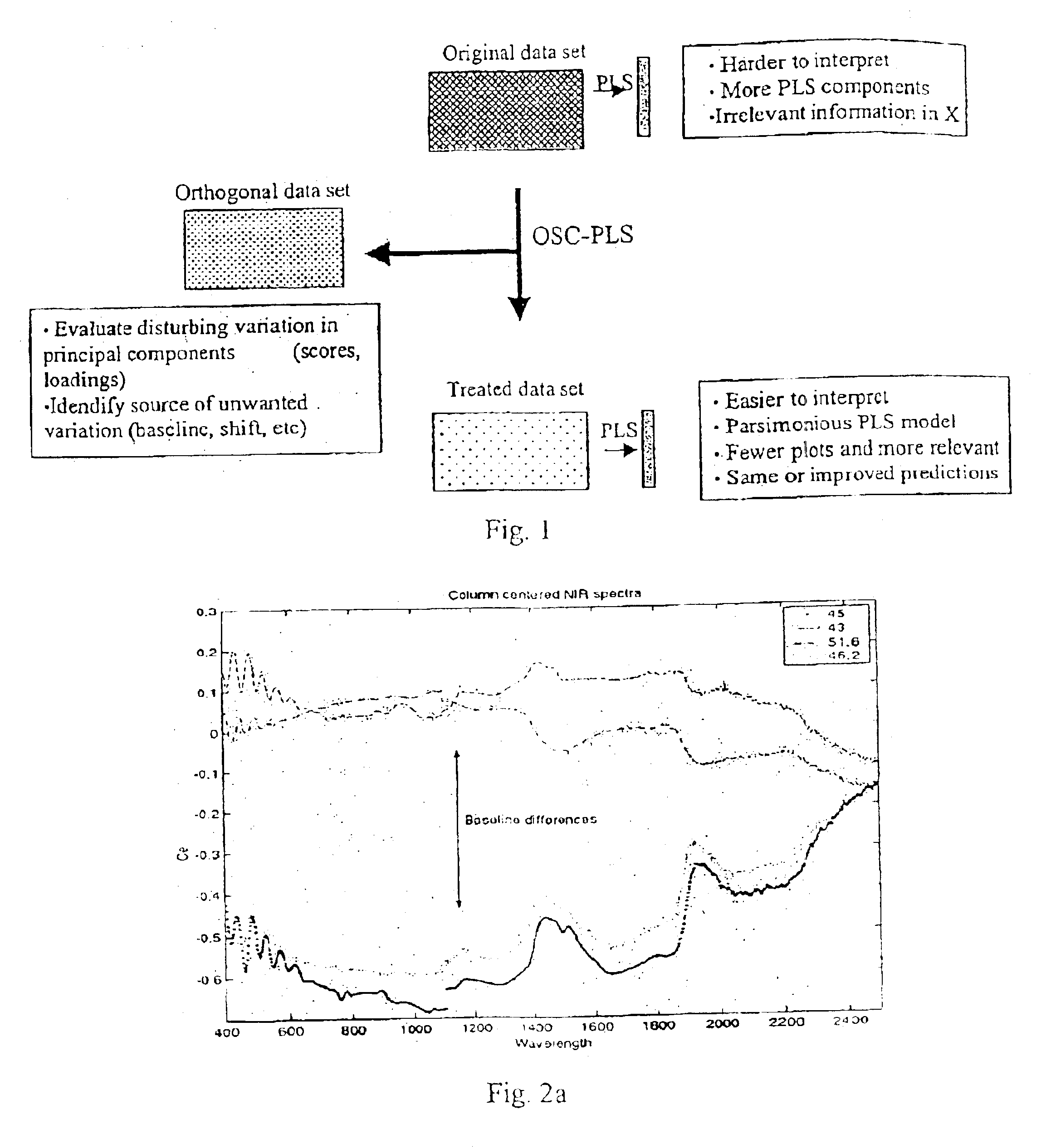Orthogonal signal projection
a signal projection and orthogonal technology, applied in the field of orthogonal signal projection, can solve the problems of inability to specify what, affecting the robustness of the model, and inability to accurately predict the effect so as to improve the quality of the resulting calibration model in the field of prediction ability, model parsimony, interpretation
- Summary
- Abstract
- Description
- Claims
- Application Information
AI Technical Summary
Benefits of technology
Problems solved by technology
Method used
Image
Examples
Embodiment Construction
The present invention provides a method and apparatus to remove systematic information from an input data set X irrelevant for the concentration or property set y or Y. In other words, to remove variability in X that is orthogonal to Y. A pre-processing method with a similar concept as orthogonal signal correction OSC is disclosed through the present invention, named orthogonal partial least squares (OPLS).
The following are definitions:
A vector, matrix and the like are defined as being sets, for example, a set may be a vector, a matrix or the like.
Primed vectors or matrixes are mathematically transposed.
A component in PCA or PLS represents a new latent variable produced from summarizing old variables by means of projection.
A loading set describes the orientation of an obtained component in relation to original variables in a data matrix X.
The character y defines a column vector and Y depicts a matrix, i.e., several column vectors.
The proposed OPLS according to the present invention ...
PUM
 Login to View More
Login to View More Abstract
Description
Claims
Application Information
 Login to View More
Login to View More - R&D
- Intellectual Property
- Life Sciences
- Materials
- Tech Scout
- Unparalleled Data Quality
- Higher Quality Content
- 60% Fewer Hallucinations
Browse by: Latest US Patents, China's latest patents, Technical Efficacy Thesaurus, Application Domain, Technology Topic, Popular Technical Reports.
© 2025 PatSnap. All rights reserved.Legal|Privacy policy|Modern Slavery Act Transparency Statement|Sitemap|About US| Contact US: help@patsnap.com



